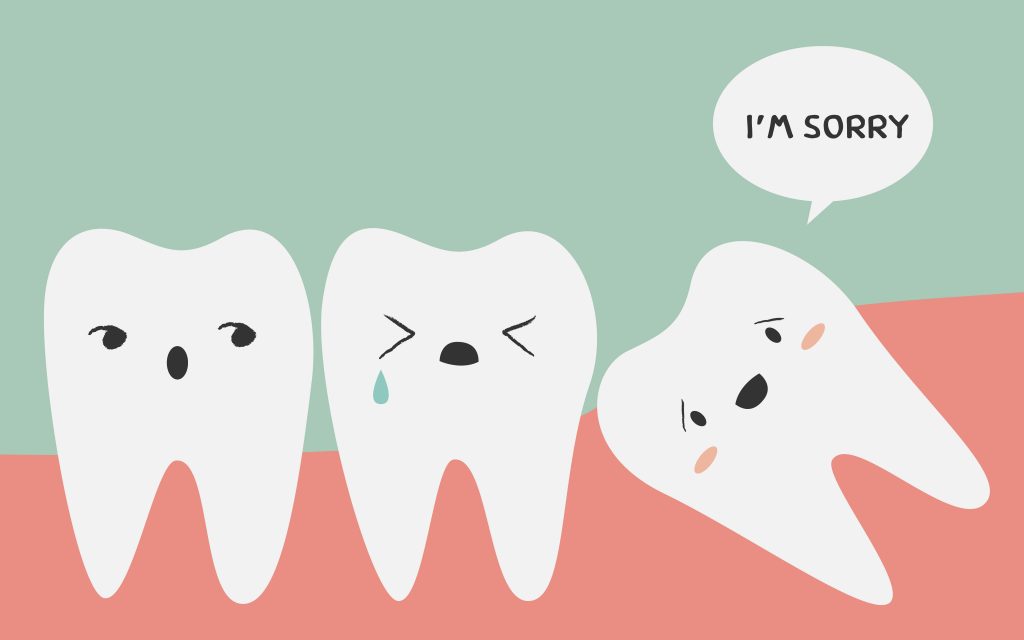
Wisdom Tooth Extraction: A Journey Through the Dental Landscape
Everybody has a story about that friend who had their wisdom teeth removed. We've all heard the tales of puffy cheeks, endless ice cream, and funny anesthesia-induced anecdotes. But when you start experiencing wisdom tooth pain, it's time to get serious and learn about the extraction process. In this article, we'll explore everything you need to know about wisdom tooth extraction, from signs of trouble to the aftercare required. So buckle up and let's dive into this essential guide!
When the Toothache Strikes: Identifying Wisdom Tooth Pain
It all starts with a nagging pain in the back of your mouth. You feel something's not quite right, but you can't put your finger on it. Wisdom tooth pain can be sneaky and can range from mild to severe. Here's how to know if it's time to consider an extraction:
- Persistent pain in the back of your mouth
- Swelling around the affected area
- Difficulty opening your mouth
- Painful, tender, or bleeding gums
If you're experiencing any of these symptoms, it's time to visit us!. We will assess your situation and determine if an extraction is necessary.
The Dentist's Verdict: The Diagnosis
Our friendly dentists will start by taking X-rays to determine the position of your wisdom teeth and whether they are impacted. Impacted wisdom teeth are ones that don't fully emerge from the gum line, leading to pain and potential complications. There are four types of impactions:
- Mesial: The tooth is angled towards the front of the mouth.
- Horizontal: The tooth is lying horizontally, pushing against the adjacent molar.
- Distal: The tooth is angled towards the back of the mouth.
- Vertical: The tooth is straight, but there isn't enough room for it to emerge fully.
The Main Event: The Wisdom Tooth Extraction Process
Before the extraction, we have a consultation on your situation. We'll discuss the procedure, anesthesia options, and any potential risks. Here's a step-by-step breakdown of the extraction process:
- Anesthesia: You'll be given local anesthesia to ensure you're comfortable during the procedure.
- Incision: Our dentist will make an incision in your gum tissue to expose the tooth and bone.
- Tooth removal: Depending on the impaction, our dentist may remove the tooth in one piece or cut it into smaller pieces to minimize bone removal.
- Bone removal: If necessary, the dentist will remove any bone obstructing the tooth.
- Stitching: The dentist will close the incision with stitches that dissolve over time.
Wisdom Tooth Extraction Aftercare: Healing Like a Pro
After the extraction, proper aftercare is essential to ensure a smooth recovery. Here's what you need to do:
- Bite on gauze: Our clinic will provide you with gauze to bite on for 30-45 minutes after the procedure. This helps control bleeding and promotes clot formation.
- Ice, ice, baby: Apply ice packs to your face in 20-minute intervals to minimize swelling.
- Rest up: Take it easy for the first 24 hours. Avoid strenuous activities and keep your head elevated to reduce swelling.
- Eat soft foods: Stick to a soft foods diet for the first few days, such as yogurt, mashed potatoes, and smoothies. Gradually reintroduce solid foods as your comfort allows.
- Keep it clean: After 24 hours, you can try to gently rinse your mouth with warm salt water several times a day to reduce inflammation and keep the extraction site clean.
- No straws or smoking: Avoid using straws and smoking for at least a week, as these activities can dislodge the blood clot and delay healing.
- Take your meds: Follow the dentist's instructions regarding pain medication and antibiotics. Our dentist may prescribe stronger medication if needed.
- Attend follow-up appointments: Our dentist will schedule follow-up appointments to monitor your healing progress and remove any non-dissolvable stitches.
The Silver Lining: Benefits of Wisdom Tooth Extraction
While the thought of having your wisdom teeth removed might be daunting, there are several benefits to the procedure:
- Relief from pain and discomfort: Wisdom tooth extraction eliminates the pain caused by impaction, crowding, or infection.
- Prevention of dental issues: Removing impacted wisdom teeth can prevent damage to adjacent teeth, gum disease, and cyst formation.
- Improved oral hygiene: Extracted wisdom teeth make it easier to clean hard-to-reach areas, reducing the risk of tooth decay and gum disease.
Wisdom Tooth Extraction: A Tale of Triumph
As we conclude our journey through the dental landscape, we hope you feel more informed and prepared for your wisdom tooth extraction. While it may seem like a daunting experience, rest assured that it's a common and often necessary procedure to protect your oral health. By following our dentist's advice and taking proper care of your extraction site, you'll soon be on your way to a speedy recovery and a healthier, pain-free smile!
